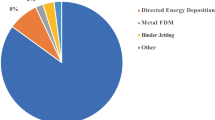Abstract
Optimization of single and multistep wire drawing processes, based on the finite element analysis and nonlinear mathematical programming techniques, is considered. Since the investigated problem involves the optimal selection of the extrusion die angles and the correspondent reduction rate sequence, it can be considered as one belonging to a class of optimum shape design problems. Characteristic to the considered problem is that the domain boundary, the shape of which is to be optimized, is subject to the shape dependent forming loads. The minimization of the objective function, which is related to the process energy consumption, is sought by taking several technological and geometrical constraints into account. The numerically evaluated examples demonstrate that by using the proposed optimization technique not only a substantial cost reduction, but also a considerable improvement in the homogeneity of plastic deformation through the cross-section of the drawn wire can be achieved.
Similar content being viewed by others
References
ABAQUS/Standard 1995:A general purpose finite element program for nonlinear static and dynamic analysis, Version 5.4. Providence, Rhode Island: Hibbit, Karlsson and Sorensen, Inc.
Avitzur, B. 1963: Analysis of wire drawing and extrusion through conical dies of small cone angle.J. Engrg. Ind., 89–96
Avitzur, B. 1964: Analysis of wire drawing and extrusion through conical dies of large cone angle.J. Engrg. Ind., 305–316
Joun, M.S.; Hwang, S.M. 1993a: Optimal process design in steadystate metal forming by finite element method-I. Theoretical considerations.Int. J. Mach. Tools Manufact. 33, 51–61
Joun, M.S.; Hwang, S.M. 1993b: Optimal process design in steady-state metal forming by finite element method-II. Application to die profile design in extrusion.Int. J. Mach. Tools Manufact. 33, 63–70
Kusiak, J.; Thompson, E.G. 1989: Optimization techniques for extrusion die shape design.Proc. NUMIFORM'89, pp. 569–574
Lange, K. 1991:Umformtechnik-Handbuch für Industrie und Wissenschaft, pp. 306–435. Berlin, Heidelberg, New York: Springer
Mihelič, A.; Štok, B. 1995a: Tool design optimization in extrusion processes. In: Topping, B.H.V. (ed.)Developments in computational techniques for structural engineering, pp. 359–365. Edinburgh: CIVIL-COMP PRESS
Mihelič, A.; Štok, B. 1995b: Shape optimization applied to metal forming processes. In: Olhoff, N.; Rozvany, G.I.N. (eds.)WCSMO-1 Proceedings of the First World Congress of Structural and Multidisciplinary Optimization, pp. 329–334. Oxford: Pergamon
Schittkowski, K. 1985: NLPQL—A fortran subroutine solving constrained nonlinear programming problems.Annals of Operations Research 5, 485–500
Štok, B.; Mihelič, A. 1995: Optimal design of the die shape using nonlinear finite element analysis. In: Shen; Dawson (eds.)Simulation of materials processing: theory, methods and applications, pp. 693–698. Rotterdam: Balkema
Thomsen, S.G. 1987: Optimization of dies for axisymmetric cold forward extrusion.Eng. Opt. 11, 13–20
Author information
Authors and Affiliations
Rights and permissions
About this article
Cite this article
Mihelič, A., Štok, B. Optimization of single and multistep wire drawing processes with respect to minimization of the forming energy. Structural Optimization 12, 120–126 (1996). https://doi.org/10.1007/BF01196944
Received:
Issue Date:
DOI: https://doi.org/10.1007/BF01196944




